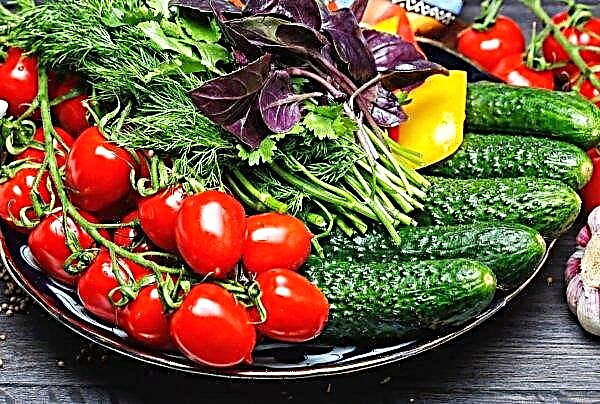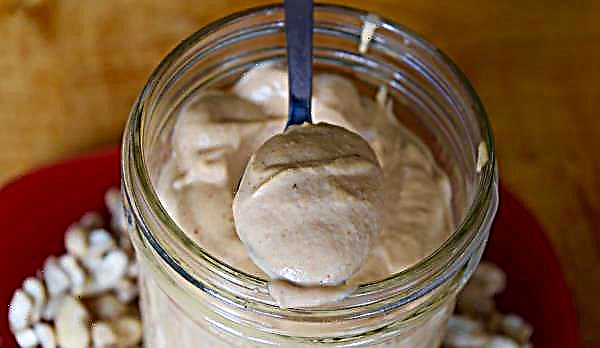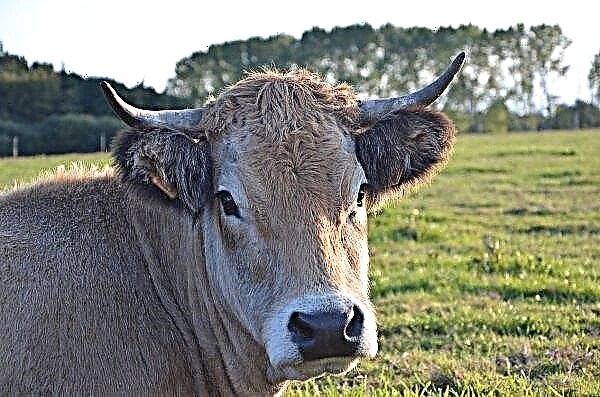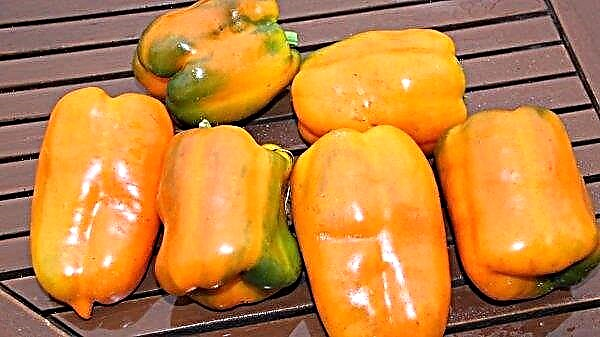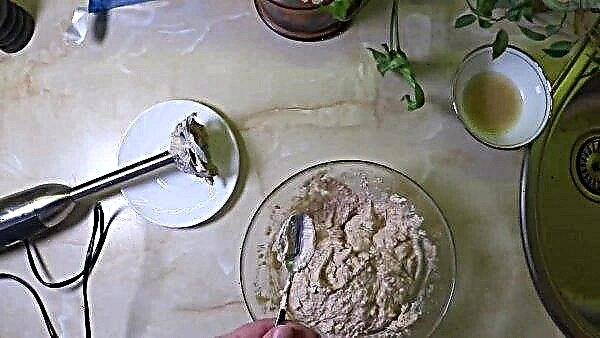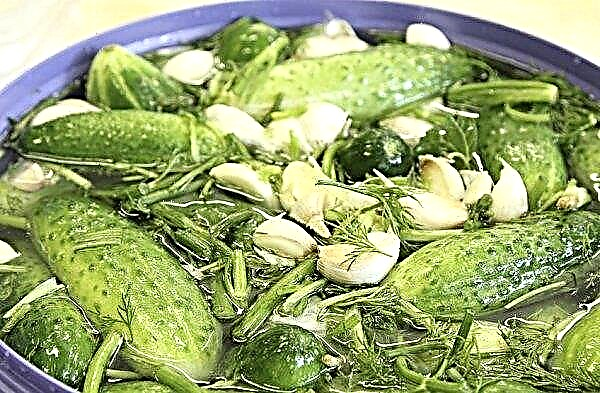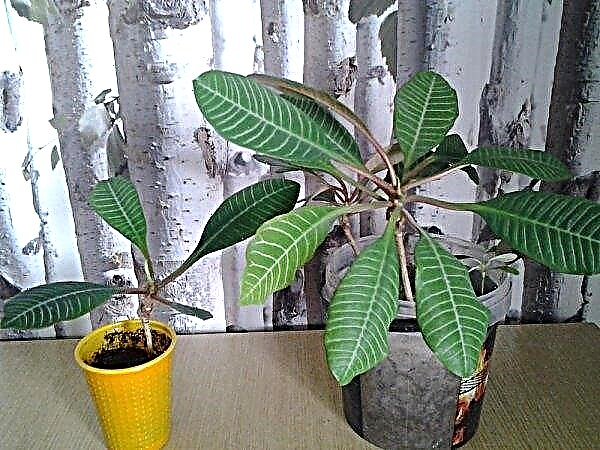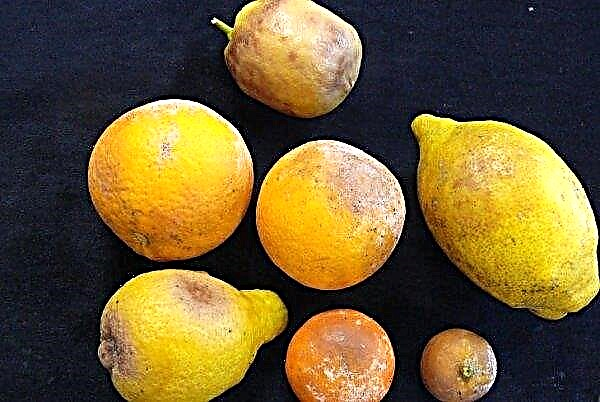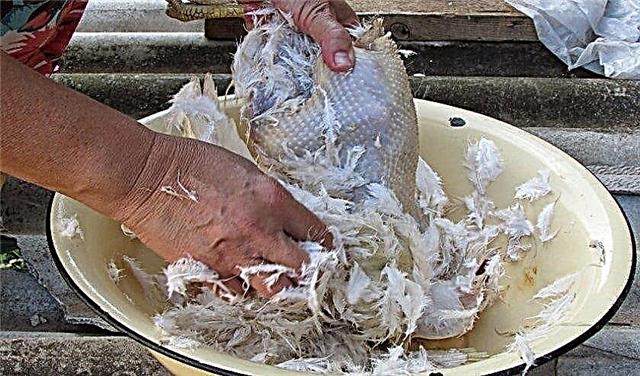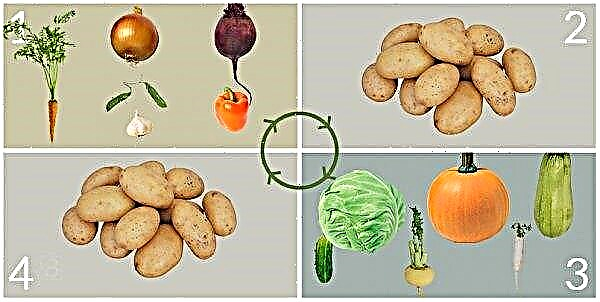Despite the fact that there are a huge variety of varieties on the market, tomato "Krasnobay" stands out among this variety. It represents a gardener's dream - there is a large fruit, a plentiful harvest and good endurance. Today he competes with the best foreign and domestic counterparts. About the features of growing more.
Grade description
The "Krasnobay" variety differs from other varieties in its external indicators:
- tomato belongs to medium-late varieties: fruits can be picked up 120 days after planting;
- refers to the indeterminate type: growth continues even during fruiting, can reach almost 2 m;
- so that the main stem receives the maximum amount of nutrients, side shoots are recommended to systematically pinch;
- leaves are small with carved edges, a dark green hue;
- the shape of the fruits is flat-round, they are quite large (average weight - about 350 g);
- ripe tomatoes are bright red;
- on each branch you need to leave up to 5 ovaries;
- the peel is dense, not prone to cracking;
- the pulp is sweet, fairly dense, with a high juice content;
- fruits can easily transport long distances; do not deteriorate during long-term storage;
- resistant to most harmful bacteria and fungi;
- the yield of the variety is high - from 1 sq.m. You can collect up to 8 kg of tomatoes;
- used both for fresh consumption and for processing.

Advantages and disadvantages
- Describing the positive aspects of this variety of tomatoes, the following are distinguished:
- consistently high yield;
- good presentation;
- rich taste;
- high resistance to diseases and pests;
- long shelf life and the ability to transport over long distances.
- There are few disadvantages:
- It is better to grow a variety in greenhouses. Only in this way tomatoes can fully ripen;
- to plant independently harvested seeds is not recommended, as they do not repeat the parental properties;
- get along badly with other varieties of tomatoes in the same area.
Important! Despite the recommendation to grow the variety in a greenhouse, it can also be planted in open areas. True, this is possible only in regions where subzero temperatures do not last long.
Self-growing seedlings
It is impossible to independently prepare seeds for sowing, but it is quite possible to grow seedlings subject to certain rules.
Optimum timing for sowing
Sowing seeds is carried out approximately 70 days before the selected date of planting in the ground. Doing this sooner or later is not recommended, since in the first case the seedlings will outgrow, and in the second - they will not have time to gain sufficient strength.
The soil
For full germination of the seeds of the "Krasnobay" variety, it is recommended to prepare a certain soil mixture. To do this, peat, turf land and sand are combined in the following ratio: 7: 1: 1. You can also buy ready-made land, which is sold in gardening stores, or regular peat tablets.
After some time, the soil is treated from pests and pathogens of various diseases. To do this, put the soil in the oven for about 20 minutes and calcine well. At the end, abundantly watered with a 5% solution of potassium permanganate.
Capacity for growing
For germination of seeds, any container in which there are openings for draining excess fluid is suitable. Will it be separate cups or a common box - depends on personal choice. In addition, you can use peat tablets (only with them a little more trouble, because you need to make sure that they do not dry out).
Did you know? Low temperature is detrimental to tomatoes, so you should abandon their storage in the refrigerator.
To be sure that all the seeds that will be planted in the ground will germinate, they can be sprouted beforehand on plain cotton or paper. These materials are moisturized and left in a warm room for a while.
Seed preparation
Since the Krasnobay variety is grown using seedlings, seed preparation significantly affects the future crop. This may include their disinfection by soaking in a 5% solution of potassium permanganate for 12 hours. And the subsequent immersion in the growth stimulator is also important, this will increase the chance of emergence after seed planting.
Sowing seeds
Seeds are planted in pre-prepared soil at a distance of about 2 to 3 cm from each other. At the same time, the depth of the deepening should not be more than 1.5 cm. From above, professionals recommend pouring a layer of peat or fertile soil.
To obtain full seedlings, you can plant both dry and previously germinated seeds. In the second case, the process of appearance of inputs will be significantly reduced. If the acquired material is covered with a colored shell, it cannot be soaked, as it contains nutrients that will help the seed germinate and develop.
Seedling Care
After planting in the ground, it is sprayed, and the containers are covered with a plastic cover or film. They put in a warm dark place where the temperature does not fall below + 22 ° C. Diving seedlings are carried out at the stage of the appearance of two full leaves.
Further growth of seedlings continues in separate containers.
At this time, care should include the creation of the following environmental conditions:
- temperature in the daytime - + 20- + 25 ° С, and at night - within + 15- + 18 ° С;
- systematic ventilation of the room, however, the effects of drafts should not be felt by plants;
- access to light at least 12 hours a day;
- watering - using a spray gun after the appearance of 1 leaf;
- 2 weeks after planting - the introduction of organic fertilizers.

Seedling hardening
14 days before transplanting to a permanent place, the seedlings are quenched. They do this in order to make it easier to take root and grow. The containers are placed on a balcony or in another place where the temperature is kept within + 10 ° С.
It is necessary to keep seedlings there for no more than 2 hours. Such manipulations are repeated for several days in a row, gradually increasing the time.
Planting seedlings in a permanent place
Plants can be planted in a permanent place only after reaching the age of 2 months. At this time, tomatoes grow to 35 cm, have about 6 fully formed leaves and a fairly powerful root system.
You need to decide on the place a year before the time of planting, since it is very important for plants which precursors were on the site. Cucumbers, carrots, onions, garlic or legumes will benefit.
Important! Before planting in closed ground it is recommended to remove the top layer, since there is a high probability that harmful insects or spores of diseases are in it.
Tomatoes are transferred to a new place with a lump of earth on the roots. In order to prevent it from shedding, it is recommended to water the ground so that it tightly grasps the roots. The planting pattern is as follows: 40 x 60 cm, where the first indicator is the distance between the tomatoes, and the second is between the rows.
Outdoor Care
Caring for the "Krasnobay" variety is no different from others, it is enough to carry out standard actions:
- periodic loosening of soil;
- getting rid of weeds;
- timely watering;
- formation of a bush and its garter.
Watering
Watering tomatoes of this variety should be weekly. Water is used, it must be warm. Regardless of what type of watering is chosen, it is important to carry it out directly under the root so that the liquid cannot get onto the leaves and stems.
Otherwise, it will negatively affect the condition of the plants. The intensity directly depends on the stage of development of tomatoes. Before the appearance of inflorescences, 4 liters of water will be needed, during flowering, the amount is reduced to 2 liters.
Despite the decrease in the amount of water during irrigation, plants are watered every 3 days. It is important not to overmoisten the soil when the fruits ripen, so that they do not begin to crack.
Top dressing
Krasnobai tomatoes are recommended to be fed approximately 4 times per season with a break of 2 weeks. The first time fertilizer is applied a week after planting in a permanent place. To do this, use a mixture of organics and mineral fertilizers.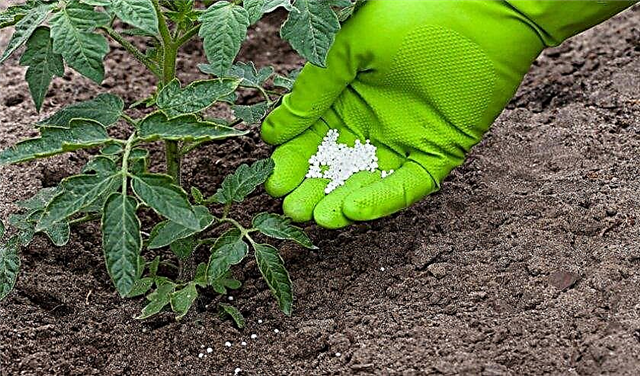 Take 1 serving of mullein and 10 servings of water, mix the components and add 20 g of superphosphate to them. The second top dressing is carried out using 20 g of superphosphate and potassium salt.
Take 1 serving of mullein and 10 servings of water, mix the components and add 20 g of superphosphate to them. The second top dressing is carried out using 20 g of superphosphate and potassium salt.
During flowering, you will need a solution of boric acid. Prepare it from 2 liters of water and 2 g of substance. The resulting composition is sprayed with a plant. They do this to stimulate the appearance of ovaries and improve the taste of fruits in the future. After 3 weeks, phosphorus-potassium top dressing is repeated.
Did you know? 100 g of tomatoes contain only 22 kcal. So this product can be called dietary.
Stepson
To obtain a high yield, the plant is formed into 1 stem. The first inflorescence appears above 10 leaves. It is recommended to pinch the growth point only at the end of the growing season, and you need to leave at least 7 brushes with 5 flowers each.
Soil care
Among other things, the earth needs care, which includes getting rid of weeds that absorb moisture and nutrients from the soil. After watering to reduce moisture loss, the soil must be loosened. Such actions will increase the penetration of oxygen into it.
Another way to preserve moisture is mulching. You will need dry grass or compost, which is laid around the bushes and between the rows.
Bush tying
Since the plant has very high stems, so that they do not break under the weight of the fruit, it is recommended to tie them up already at the stage of formation of the bush. If there are few plants, then you can use rods. Each is inserted close to the trunk and connected with a rope. Trellis can be made for a large number of plants. They should be high, up to 3 m. The bushes are tied to the trellis with a nylon rope.
Trellis can be made for a large number of plants. They should be high, up to 3 m. The bushes are tied to the trellis with a nylon rope.
Preventative treatment
In order to avoid problems with pests and diseases, it is recommended to carry out preventive measures:
- Insect repellent (stalk, whitewash or solanum minoea) plants are treated with such insecticides: “Lepidocide” or “Bison”. Of the folk methods, processing onion husks or wood ash is suitable.
- To prevent brown rot or phomosis, reduce the concentration of nitrogen in the earth, and also monitor the amount of water when watering.
Detection of a viral disease is dangerous and cannot be treated. Affected bushes eliminate.
Harvesting
Harvesting, the fruits are distributed according to the degree of ripeness. Most poured ones are used for making salads, juice or mashed potatoes. Unripe are sent to ripen. They are placed in containers and left in a warm room.
To reduce this period, it is recommended to put a few ripe tomatoes, which will produce ethylene, which contributes to the maturation of the rest.

